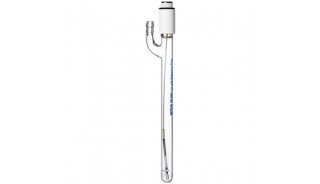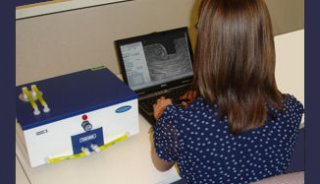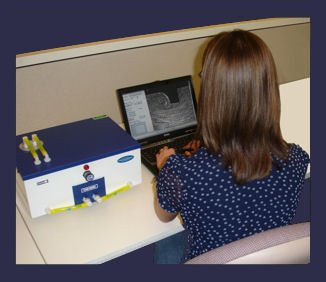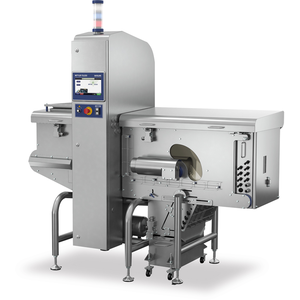Use of the B.D. FACS or Calibur Flow Cytometers-2
Gating:
Gating will allow you to view cells of interest by any combination of criteria that you choose. Gating does not change the intensity value assigned to an event as is the case for changes in voltage or compensation. It simply lets you decide which data to view and which data to ignore or discard. It is important to check that small changes in your gates don't have significant effects on your results or else your data will be prone to artifact. When you create or format a data plot (i.e. on the Data menu select "Format Histogram" or "Format Dot Plot") you can select any of the gates that you have created. This will filter the data and plot will only display those events which meet the gate criteria. Gating will not discard data unless you have requested this under "Acquisiton and Storage". Gating can subsequently be changed when you analyze your data without any loss of information.
To set up a gate you first draw a "Region" using one of the tools on the tool palette (there are four geometric shapes to choose from outlined with dotted lines). Note that the "Marker bar" (designated with an M) and the quadrant maker tool next do not define regions. They are used for statistical analysis only and can't be used to filter data like the regions/gates.
Regions which are commonly employed include:
PI for DNA content: FL2 area vs FL2 width. This window is useful for gaiting out apoptotic cells (lower left quadrant) and doublets (a separate cloud with increased FL2 width).
FSC vs SSC: This is useful for gating out RBC, myeloid cells etc, from blood or marrow.
Each region that is setup automatically defines a gate (e.g. G1 = R1). To delete regions select "Region List" under the Gates menu. To combine regions into more complex gating criteria use the "Gate List" under the Gates menu. (e.g. G5 = (R1 or R2) and R3).
Acquiring Data:
In the "Acquisition" window deselect the "Setup" button. Now when you select "Acquire" the cytometer will collect 10,000 events and automatically save a data file with the location and naming convention that you previously specified. Vortex each sample before running. Select a flow rate button on the machine (Low, Med, or High) to keep the event rate between 200 1000 events per second. The maximum event rates are around 4000/sec, attempts to increase the flow rates in this case will actually reduce the event rate by increasing the percentage of events that the cytometer rejects. Enter the Sample ID values if you wish these to be stored in each data file. (These can later be viewed under "Histogram Stats" for each data file).
When you finish running your samples consider saving your template for future analysis and consider saving your instrument settings. Also consider moving your data files and template to the lab computer for analysis. Print out your histograms for your notebook.
Troubleshooting:
If you get a "cytometer not ready" you probably left the cytometer on "standby". Otherwise you might be running out of sheath fluid. Check the reservoir directly or select "Status" under the Cytometer menu. Don't let the sheath fluid run dry or you'll have trouble from air bubbles clogging the cytometer.
Shut Down:
The cytometer should be left on in "Standby" mode with a tube of water on the intake nozzle when not in use. If you are the last person scheduled to use the cytometer you should follow the shutdown procedures listed in the flow lab. Basically this consists of running dilute bleach, detergent and then water through the machine each for 5 minutes and then power down both the cytometer and the computer.
Sign Out:
Record the file numbers that you used in the log book by the cytometer so the next user doesn't overwrite your data files by accident. Also sign out at the computer indicating the budget number and the time that you used the machine. It's important to do this correctly for your data files to be transferred to your Fred account.
Analyzing Data:
Stored data files may be analyzed after acquisition is complete. You may use your previous template to make matters easier but this is not necessary. From an open template select an individual histogram or data plot and select "Format Histogram (Command+F)". From the dialogue box you must change the selection from Acquisition to Analysis. Select the data file you wish to open. Repeat this process for each histogram or dataplot in the template. To increment the histograms to the next data file select them and then press (Command + ] ) or "Next data file". Statistics may also be viewed on selected histograms, and histograms may be overlayed on on another in the analysis mode.





















